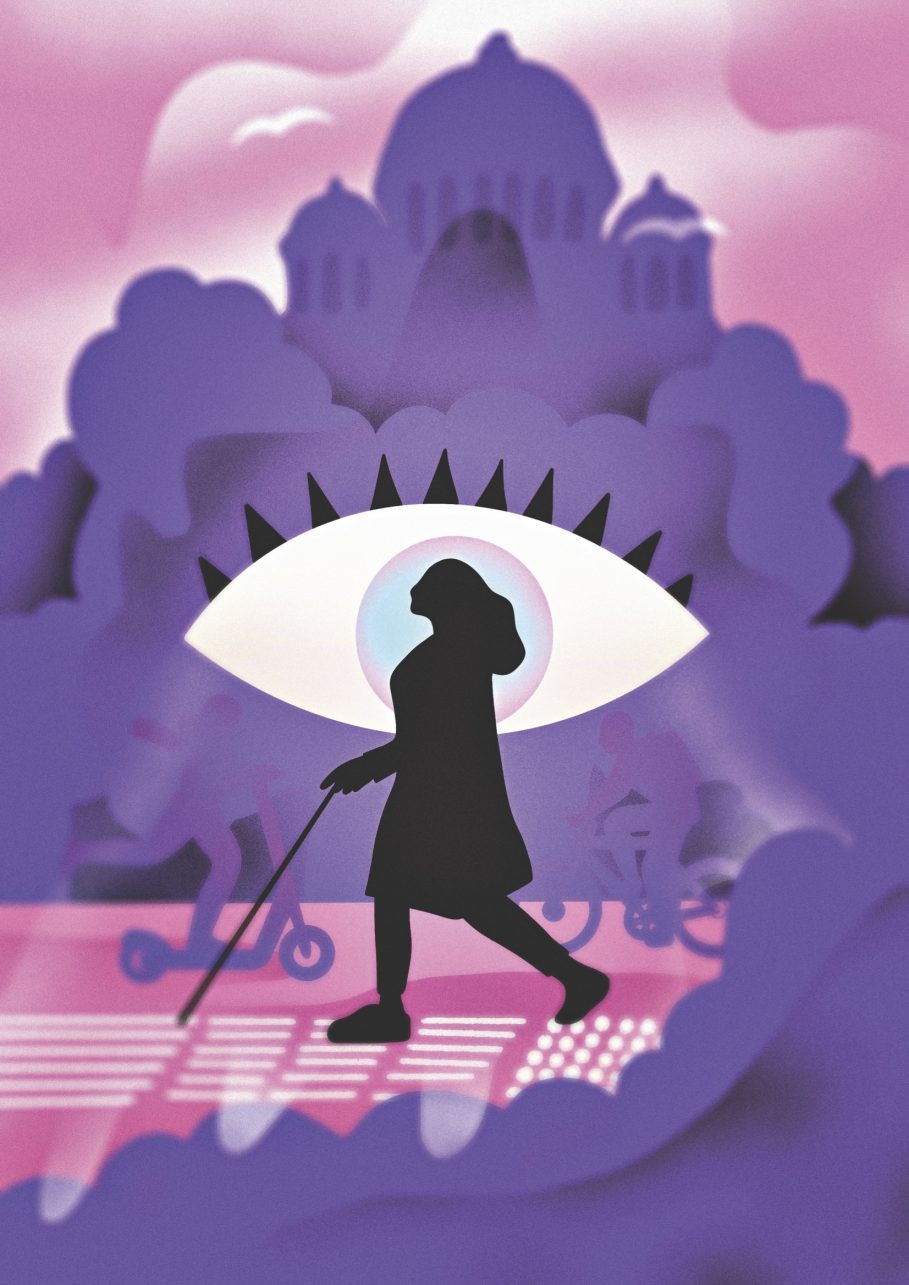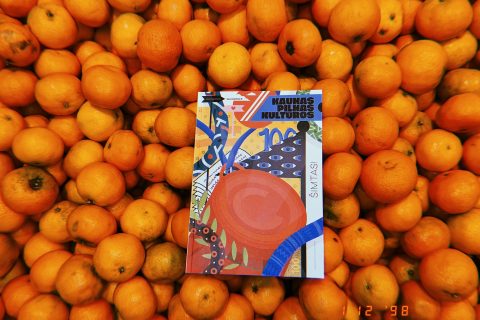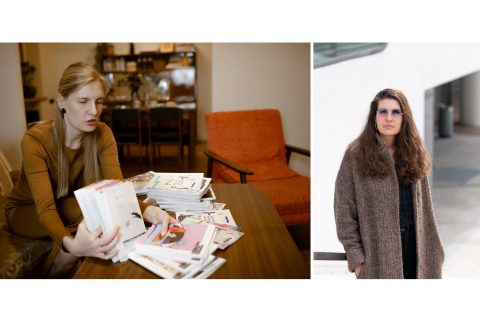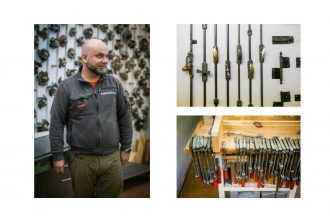If sometimes it seems that you have seen everything in Kaunas (and in life in general), I urge you to close your eyes. And I say this unironically. Paraphrasing Antoine de Saint-Exupéry’s overused phrase, I can confirm that many different experiences open without seeing with your eyes. The Lithuanian Association of the Blind and Visually Impaired with their southwest center project NeRegĖjimo galia (the power of not seeing) offers just that. An educational walk that hasn’t been carried out anywhere else in the world until now, offers a guided city tour led by a blind person.
Although the organization has been carrying out sensory tourism activities since 2021, and at the end of last year it won the Lietuvos Galia initiative award, I only learned about this unique walk around the center of Kaunas now. I immediately wanted to step into a blind man’s shoes, so to speak, and take an actual walk in them. Neither much nor little, about five km. In the heart of the city. Without the ability to see.
I will admit, that although I have participated in several projects that aim to make art accessible to all groups of society, for example (NE)matoma architektūra (INvisible architecture) and ECHOtektūra (ECHOtecture), the upcoming tour was causing me considerable anxiety. In a world where, according to scientists, we receive 90% of information through our eyes, it is not easy to voluntarily turn off one of the most important senses, trust the other four, and relax. Especially if you have to venture into an open space led by a stranger.
The tour with a blind guide that lasts about one and a half hours begins in the oak park at the D. Matulaitė’s Bison sculpture. Here, the participant gets to know the guide, learns how to use a mobility cane, and is informed about the entire route. Finally, the person has to put on special opaque glasses, grab a white cane with their right hand, take somebody’s arm, and start walking (or in my case tiptoeing). The guide walks from the participant’s left, thus becoming a sighted person according to all the rules, and half a step ahead to be able to inform the tour participant if an unexpected obstacle occurs on the way.

Although I thought I got rid of the fear of the dark as a child, I had to think again. When taking the first steps I was overwhelmed by discomfort and a strange sense of space. It isn’t easy to move without knowing what is waiting for at the next step (or perhaps quite the opposite when you have seen just a couple of minutes ago how many objects you can encounter in that one step). The guide also names the fear of the dark as the biggest inconvenience for many tour participants. According to him, it is strongest at the beginning of the journey, later, when you realize that you need to check the obstacles with the tools provided – in this case, the mobility cane – the confusion subsides. I can definitely confirm that. Of course, holding on to someone who has lived this way all or most of their life is also encouraging.
I do not doubt that most sighted people, no matter how open, curious, and empathetic they may be, have felt uncomfortable when confronted with a blind person. How to approach them, how to offer help without offending, and is it necessary to do that at all? Perhaps only the sighted people think that a blind person requires help. I must admit that these questions also worried me before the tour. Of course, as it turned out later, it was completely unnecessary since all inconveniences disappeared as soon as we met. The guide makes a sincere effort to establish a connection, encourages questions, helps the participant feel comfortable, and reassures when necessary. When you can’t see, you feel so vulnerable that the person next to you becomes very important in that short time. After all, you just took off your mask and exposed your fears. Often, not even some friends are meant to see that.
And it is this moment that becomes one of the most beautiful experiences of the tour when adjectives disappear and only people remain, connected by common interests and curiosity, with dreams, tired of everyday life, boring work, angry neighbors; people who visit theatres and museums, who travel, celebrate the challenges they overcame or knowledge they acquired. Sister, brother, friend, friend, acquaintance, colleague, relative, sweetheart, lover, son, daughter. A person.
I don’t know if you have noticed, but when we ask a sighted person to tell us what could be experienced in one place or another, they will first list the things that can be seen. A blind person will mention completely different things. When asked what we will do in the oak park they will say that we will be able to hear the birds sing, walk around oak trees, and find peace and comfort. I get it now: without being able to see, you start to listen more. Not only to listen but also to hear. Chirping sparrows, a babbling brook, skateboarders and joggers, cars rumbling somewhere in the distance, or a motorcycle passing loudly help you to orient yourself in space. Similarly with touch. You even get a chance to be a little proud of yourself that you can identify an oak by touching its trunk (although I don’t know how fair that is when you have previously seen the bark…). Finally, you begin to understand what reference points are used by the blind and why we need bumps on the pavement. You suddenly start wanting more of them…
And when you seem to get used to the new circumstances and slowly begin to relax, the route leads down Parodos Hill towards Laisvės Avenue where cars are buzzing nearby, and the abundance and intensity of sounds willy-nilly make you slow down a bit again. And I haven’t even mentioned bicycles and scooters, which the blind identify as one of the biggest dangers! And I don’t just mean the ones speeding past, but also those that ‘got tired’ in the middle of a bicycle and pedestrian path, which magically ascended and climbed on top of the electrical panel, fell on the stairs, or lay down to rest by the cafe door. Does it annoy you too? Well, at least you can see them and avoid hitting your head or other body part.
It is the obstacles that I start thinking about the most when I enter Laisvės Avenue, the third part of the route, which welcomes you with people, the bustle of cafes, restaurants, different moods, smells, sounds, and music. More life means more challenges. How do you know when to stop and not enter the roadway at an unregulated crossing? How do you make sure you can do that safely? What objects are hidden in the pavement and how to find them? What does the Church of St. Michael the Archangel look like when we ‘see’ it with our hands? And how can you not get frightened when a bicycle suddenly appears out of nowhere in a crowd of people? If I overcame the first two zones – Oak Park and Parodos Hill – calmly, I slowly started to get angry on Laisvės Avenue, realizing that the greatest discomfort is created by us, the people, who are in a hurry, focused on themselves or, on the contrary, distracted and insensitive. In other words, those who look, but don’t always see, and create obstacles where there are no shortage of them anyway. And I’ve only been dealing with it for just over an hour!
But everything is fixed by a cup of tea in one of the city’s cafes, which concludes the experiential journey. A warm drink sipped in the dark and stereotypes that have just been completely buried, warms me the most. We are all the same: we want to be noticed and needed, love and to be loved. Therefore, I really wish everyone to see the city and people differently. Like the blind people say: to see it not with your eyes but using other senses. Therefore, the oxymoron in the title of this text is not accidental. After all, no one knows which ‘seeing’ is better.




